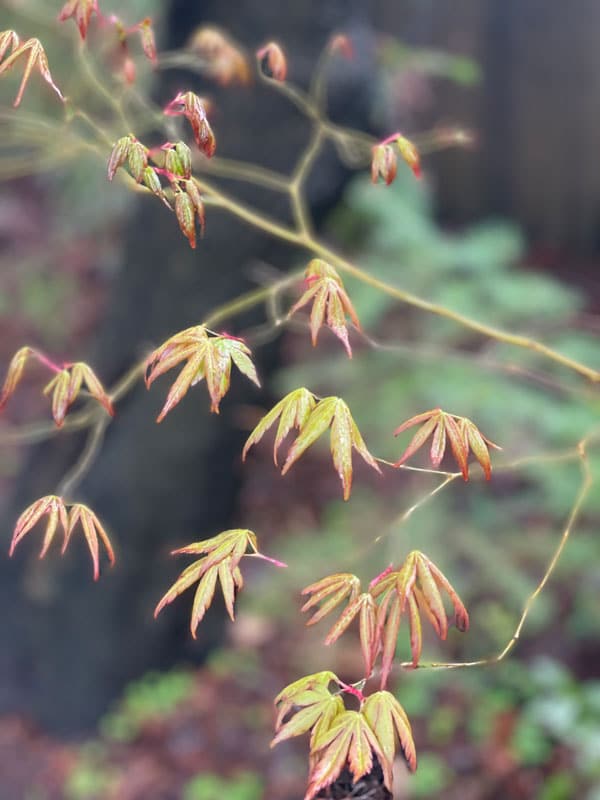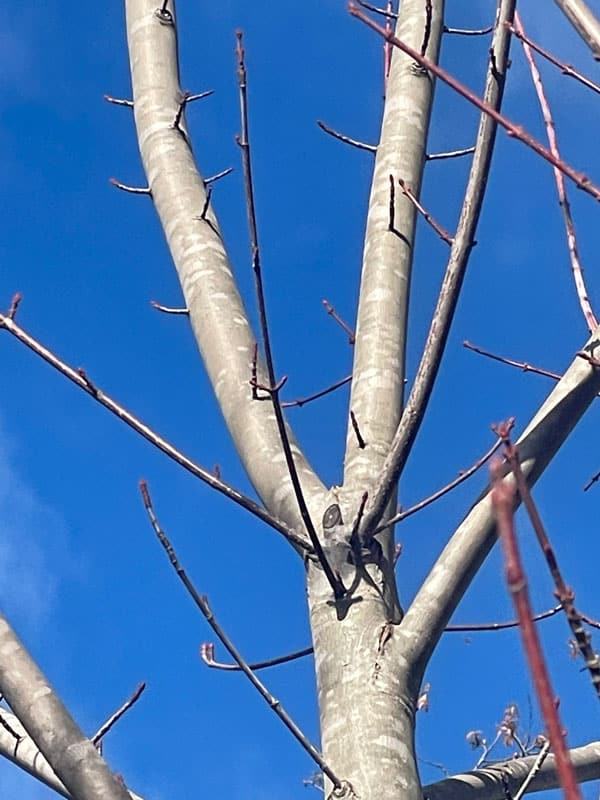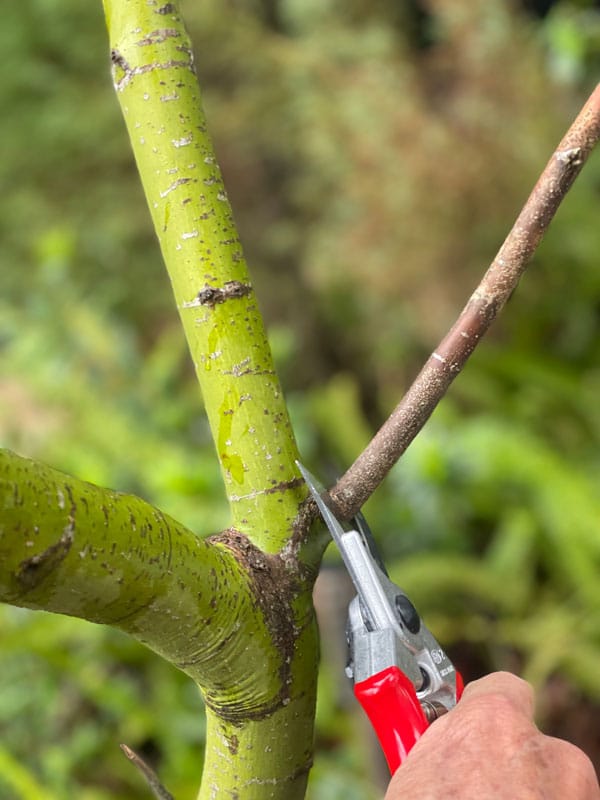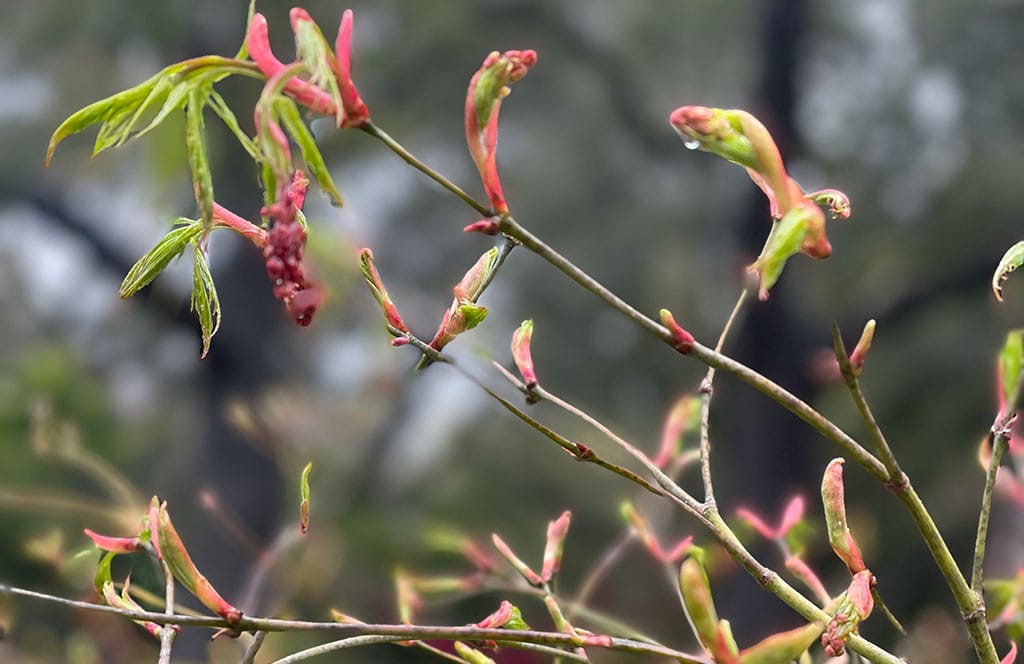
How to Prune a Japanese Maple Tree
There are two typical growth patterns for Japanese Maples. The first type are upright varieties like the common green Acer Palmatum or the Bloodgood cultivar which has burgundy foliage. The second type of growth pattern is the weeping variety such as Acer Palmatum Dissectum autopurpureum.
All Japanese Maples have a decurrent growth pattern. Decurrent trees have spreading limbs as opposed to excurrent trees like conifers with a single trunk and mostly horizontal branching. When training trees with decurrent growth it is important to establish good structure in the tree as early as possible. Early training of all trees is essential in promoting strong branch attachments to reduce branch failures as trees mature.
Pruning Upright Japanese Maple Trees

Pruning to develop proper structure
When pruning your Japanese Maple tree the goal should be to promote horizontal branch attachments as much as possible. Leave lower limbs on the tree because they add strength and caliper to the trunk. It is also important to establish a dominant trunk as close to the center of the tree as possible. Japanese Maples will always have a multi-trunked form but keeping the center trunk larger and more dominant will provide a better tree structurally and also develop a tree with an aesthetic form as the tree matures. To promote a dominant area the of tree you must prune the other trunks and branches to reduce their size and foliage. By pruning areas of the tree other than the main trunk these trunks will grow more slowly because they do not have as much leaf area to produce food and in turn the growth of these branches will be slowed.
Mistakes to avoid when pruning Japanese Maples
One of the most common mistakes people make when pruning Japanese Maples is to cut the top of the tree. Topping or heading cuts ruin the shape of your tree and promote decay at the heading areas. Another common mistake is over pruning a tree. The maximum amount of green foliage that should be removed in any season is 25%. Pruning more than 25% can stress the tree. Over pruning can also lead to sunburn of the bark. Japanese Maples have very thin bark which sunburns easily.
Types of pruning for Japanese Maples

Pruning weeping Japanese Maples trees
Weeping variety Japanese Maple trees tend to grow thickly with branches that curve downward and often cross over adjacent branches. Some thinning is beneficial to reduce small branches dying from inadequate light. However, it is important not to thin the trees too much which can lead to sunburn of the uppermost branches. If possible, leave some foliage covering the top area of the tree to shade these branches. Remove any watersprouts (sucker type branches) growing below the graft of the lower trunk.
As weeping maples grow larger they often grow more horizontal than vertical because of their weeping growth pattern. Crown shaping can reduce these horizontal limbs if necessary.
Time of year to prune Japanese Maples
The best time for pruning Japanese Maple trees is the winter months when trees are dormant. December and January are ideal months for pruning. Light pruning can be done at any time of the year but pruning during a tree’s dormant period is best.
A good resource for illustrations of different types of pruning is the ANSI A-300 Standards for tree pruning available from the International Society of Arboriculture at isa.arbor.org. Google Images also has some illustrations under proper pruning. More information is also available at TreePro Professional Tree Care in Santa Rosa at treeprosonoma.com.







